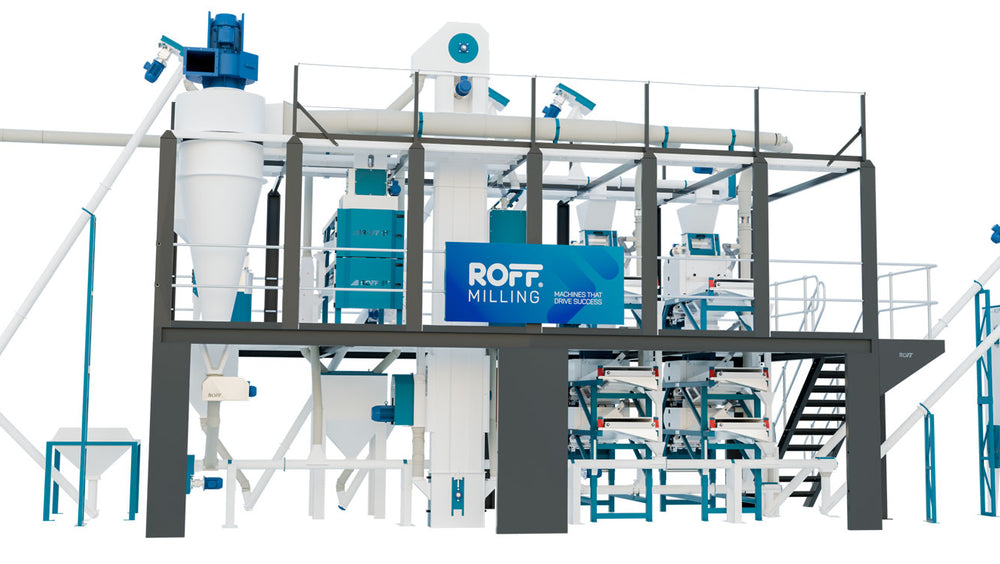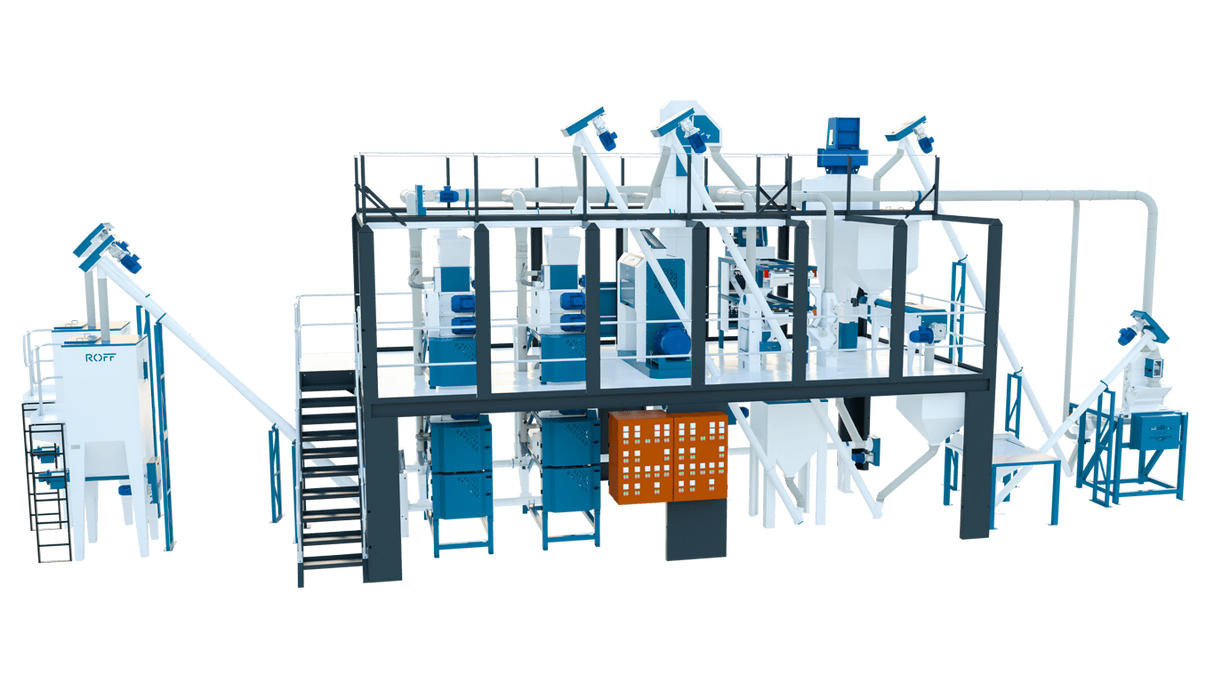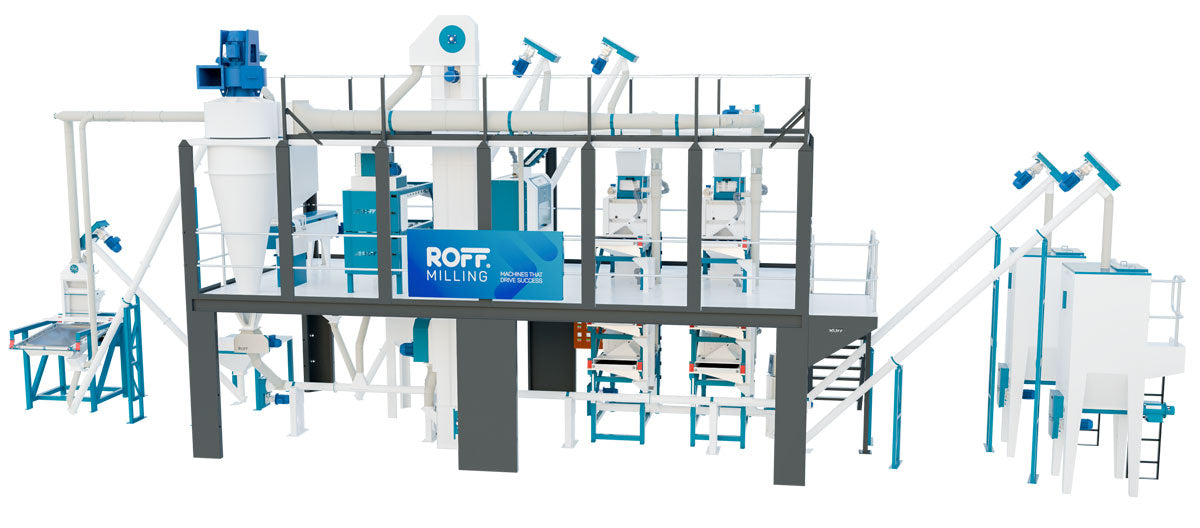Potential maize millers often ask us to explain the attributes of a good mill, and rightly so. The mill you end up choosing for your maize milling operations will be a major investment for your business and is directly linked to your profitability.
In this blog, Charl Marais, Managing Director of Roff Milling, unpacks the key aspects that will ensure a milling operation’s long-term viability and success.
1. Machines
1.1 Extraction rates
To understand extraction rates, we need to understand how a maize seed is constructed. There are three main parts:
- The endosperm, which will become the flour or maize meal,
- The bran or the husk, and
- The germ.

An efficient milling process ensures that these three parts are separated, and this process should enable the miller to recover as much endosperm as possible, which is the required product. The bran and germ are by-products that are mainly used for cattle feed.
The more endosperm that is recovered, the more profitable the process will be for the maize miller. It’s crucial that the extraction rate of the process enables the miller to recover the highest possible percentage of endosperm. The difference between a good or efficient process, and an inefficient process is marginal; it can be as little as 2 – 3% of making a good profit by recovering a good percentage of endosperm, or the business running at a marginal profit.
The process should be measurable and enable the miller to measure the maize meal and by-products, whether it is to measure it into a bag or use process weighers and scales for an inline process measurement.
1.2 Simple to operate
To design a complicated process is simple, but to design a simple process takes a lot of effort. Leonardo da Vinci said: “Simplicity is the ultimate sophistication”. At Roff Milling, we like simple designs that deliver good results.
Why is this important to make a good mill? Well, there is no use in having a complicated mill, like many European mills, where you need to employ a highly skilled miller to operate a low-capacity machine. Low capacity in this case is anything up to 120 tons per day. Roff Milling puts in the effort to keep the process simple, while focusing on maintaining the highest standard of quality, extraction rates and other important aspects in a mill.

1.3 Simple to maintain
It’s important for Roff to manufacture and provide our clients with a machine that’s easy and safe to maintain. Roff uses good quality materials and standard parts that are readily available in the market, like bearings and v-belts, as well as some of our electrical parts. The bigger mills like the C-80 use a PLC, but on the R-70, we use straightforward electrical panels with push buttons of which the parts can be found in all business areas throughout Africa.
Like buying a new car, during the first three years of owning a mill, warranties don’t really mean much. The real question is how difficult it will be to maintain the machine after three years if we’re expecting a life expectancy of 15 to 20 years. This is what Roff focuses on when designing a machine. As such it’s important to choose a mill that’s easy to maintain and service, and which parts and areas can be easily accessed. Our designs include building structures, platforms and walkways that make it possible to reach parts and areas such bucket elevators, augers and feeding machines. On some competitor mills, these parts or areas are difficult to access, and a ladder is needed to do maintenance in an environment where it’s often unsafe to use ladders.
1.4 Availability of spare parts
As far as possible, Roff aims to use standard parts that are readily available in the market, such as bearings, v-belts and pulleys. Roff’s custom-made parts, which are manufactured at low cost, are kept on hand in large quantities, so that it’s always available for collection, to send via courier, or for our clients in rural areas to stock on their premises. 
2. Market
2.1 Capability to produce the required product
Every market throughout South Africa, Africa and other countries, has its own unique requirements and every region has its own definition of good quality maize meal. As such, what makes a good mill for the client is the capability of the milling process to be adjusted or customised to ensure that it satisfies and meets that specific market’s requirements.
It all comes back to extraction rates. The objective is to produce a product that is defined by the market as a good product and a good extraction rate for the client. Extraction rate is the measurement of profitability in the process. As mentioned in paragraph 1.1, maize consists of three parts namely the endosperm, bran and germ. The extraction rate is the capability of the process to extract the maximum amount of endosperm. A good mill should be able to match the market’s requirement at good extraction rates.

2.2 Knowledge of the market
Knowledge of the market is important, and as previously mentioned, every market has its own standards of quality. There is a substantial difference between the various markets and areas with regards to what maize meal they consume. In some markets, the maize meal will be coarse (almost like fine grits), and in others, it’s more refined, like bread flour.
A conversation with a client from Kenya regarding the milling process and his needs will be vastly different to the conversation with a client from Uganda. Although they are both from East Africa, their products vary substantially, and the process varies accordingly. A manufacturer might have a very good product, but if he doesn’t supply a product according to the specific needs of the customers in the market or that specific market, the client is not going to be successful and it could mean failure for his business.
With over 30 years’ experience in manufacturing high-quality maize milling machines that offer best-in-class extraction rates, Roff Milling can also partner with you to build a profitable maize milling business.
Visit roff.co.za or call +27 56 212 2697 to find out more.












2 comments
Les tarifs machines
———
Roff Milling replied:
Our sales team has been in touch via email
Vriendelike groete / Kind regards
ROXANNE VD WESTHUIZEN SALES ADMINISTRATOR M +27 72 251 3547 No. 10, 9th Road, Industria T +27 56 212 2697 Kroonstad, 9499, South Africa roff.co.za<https://www.roff.co.za/> [logo]<https://www.roff.co.za/> The information in this message is solely for the intended recipient. If you are someone other than the person named as addressee, kindly delete this mail, and notify the sender. Please note that copying, disseminating, or taking any action based on the above information by anyone not intended as the recipient is unlawful. The views expressed in this message are those of the individual sender unless specifically stated as those of Roff Industries (Pty) Ltd.
Looking forward for your advice on how to start a feeds milling machine.